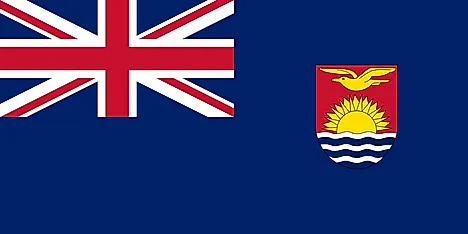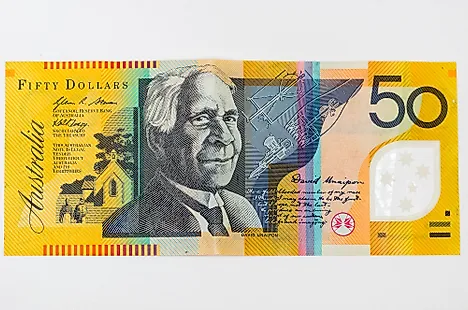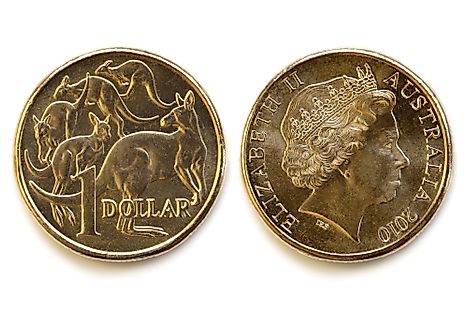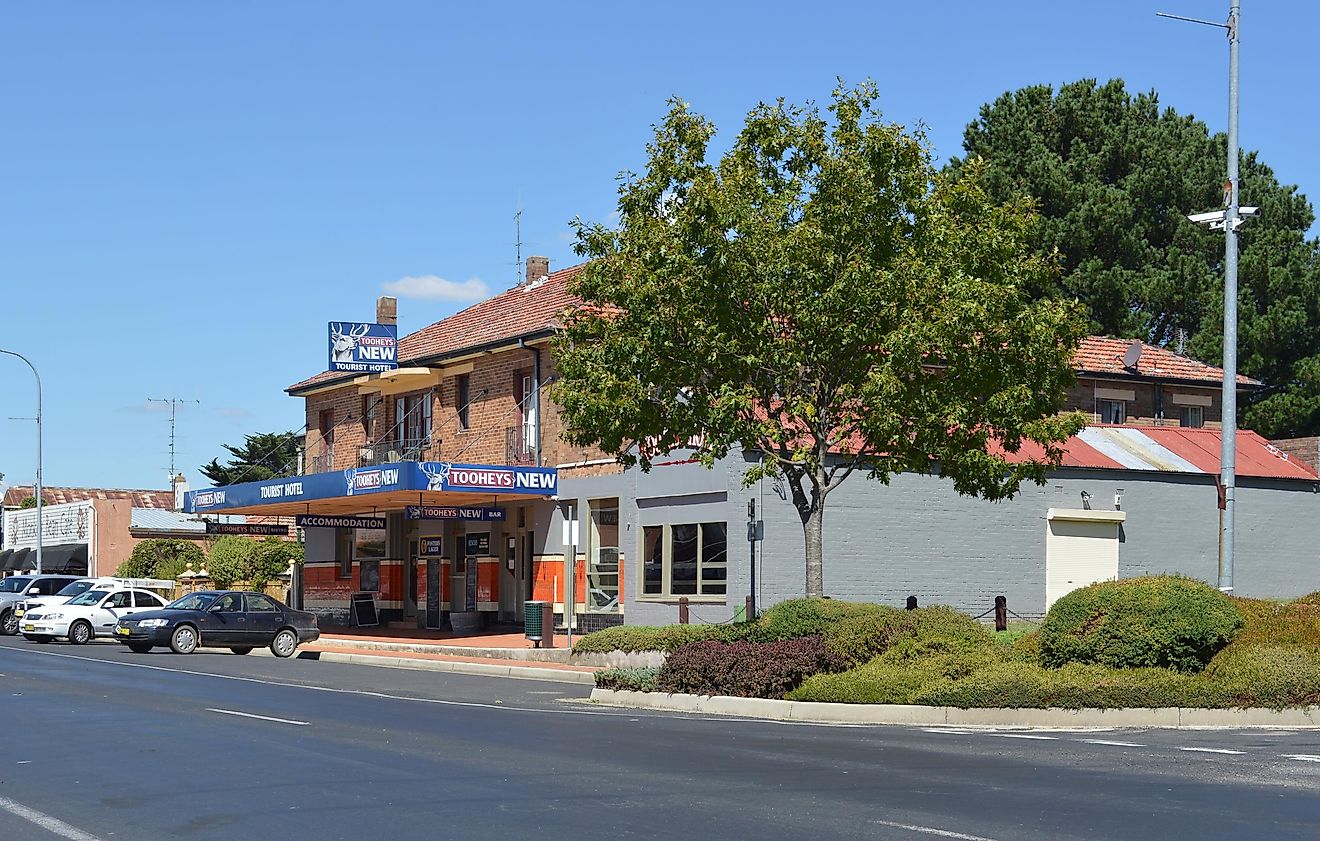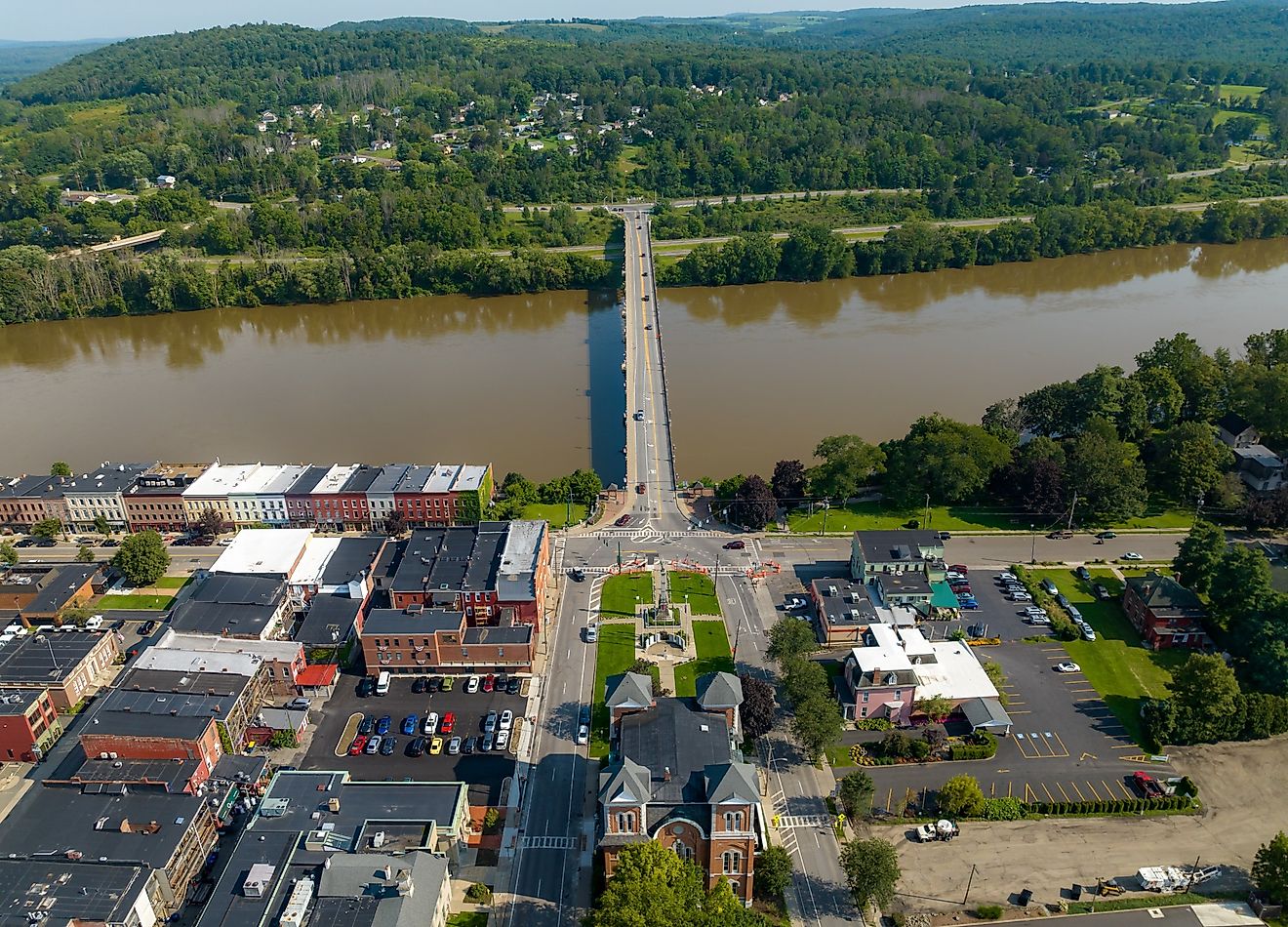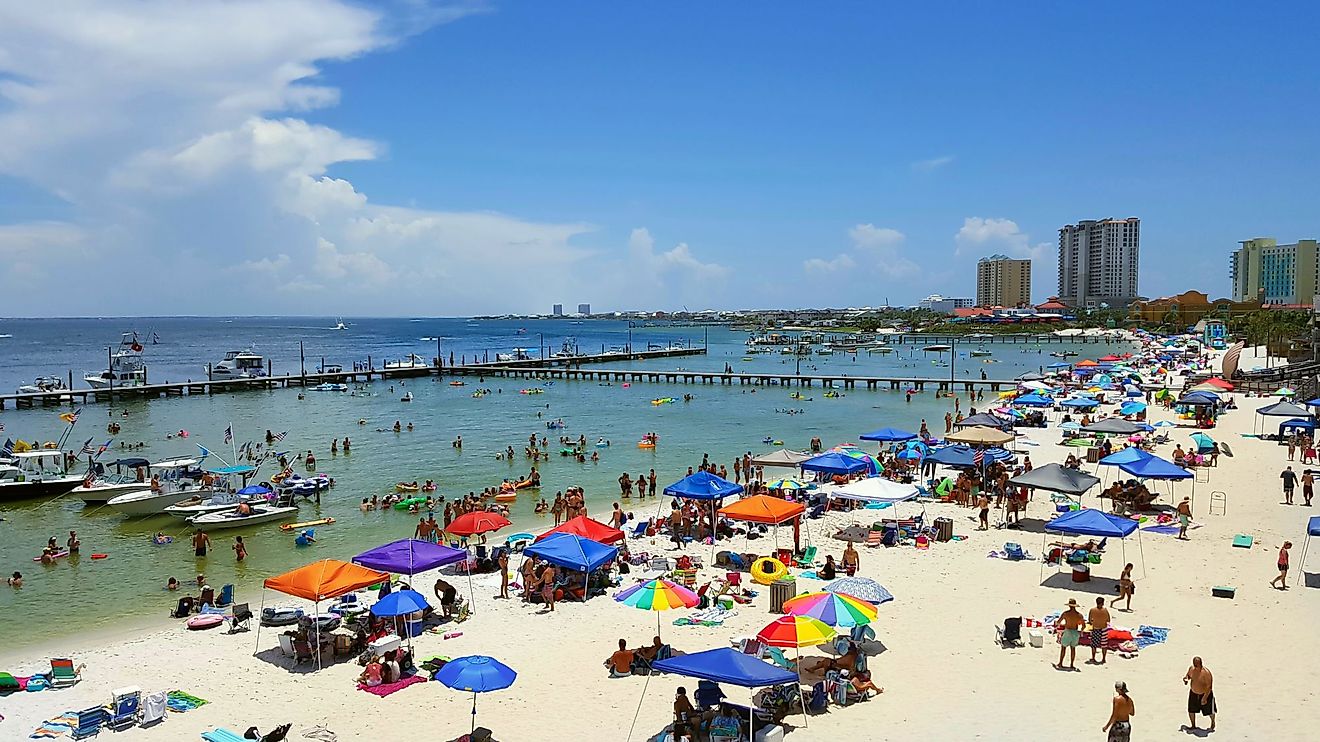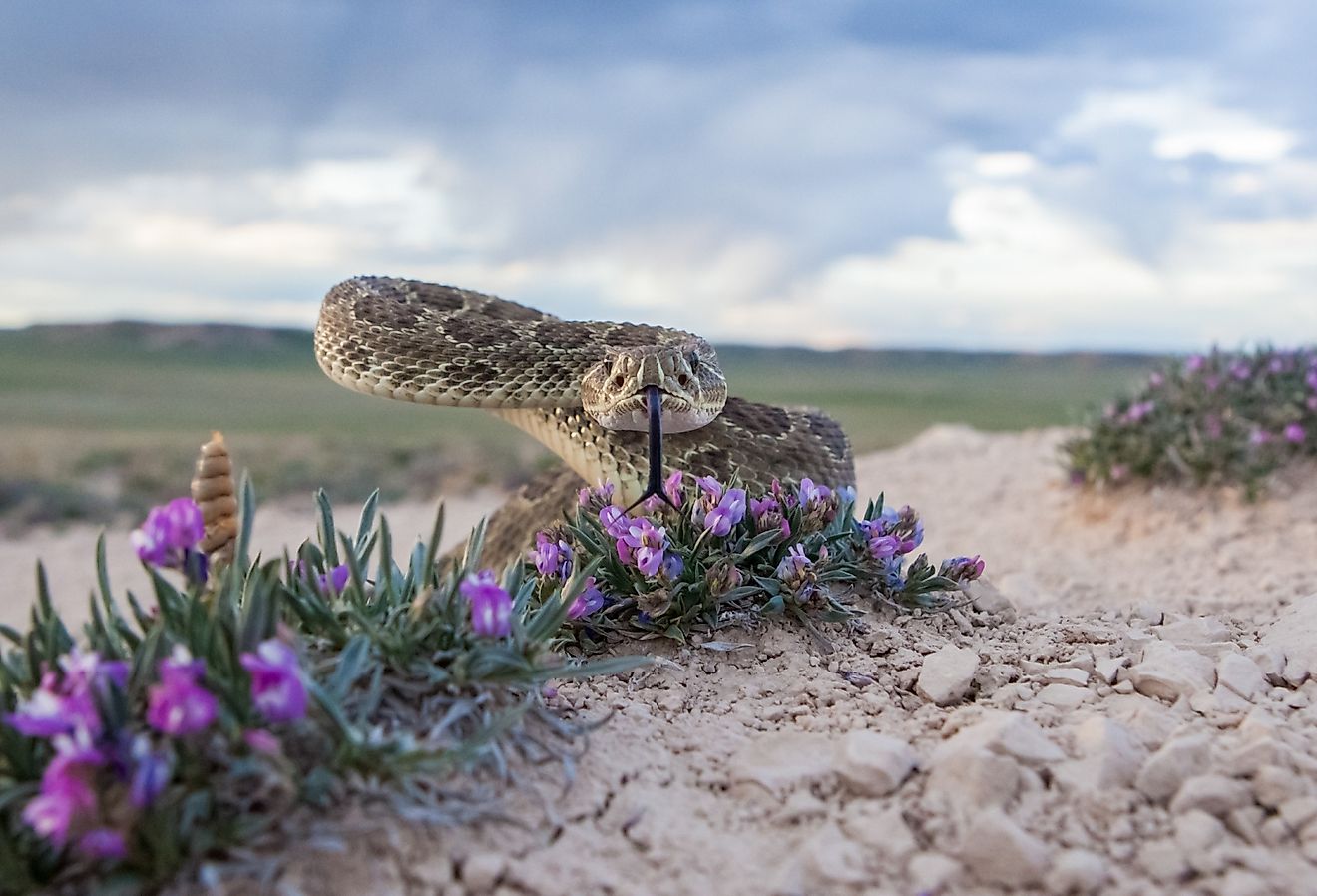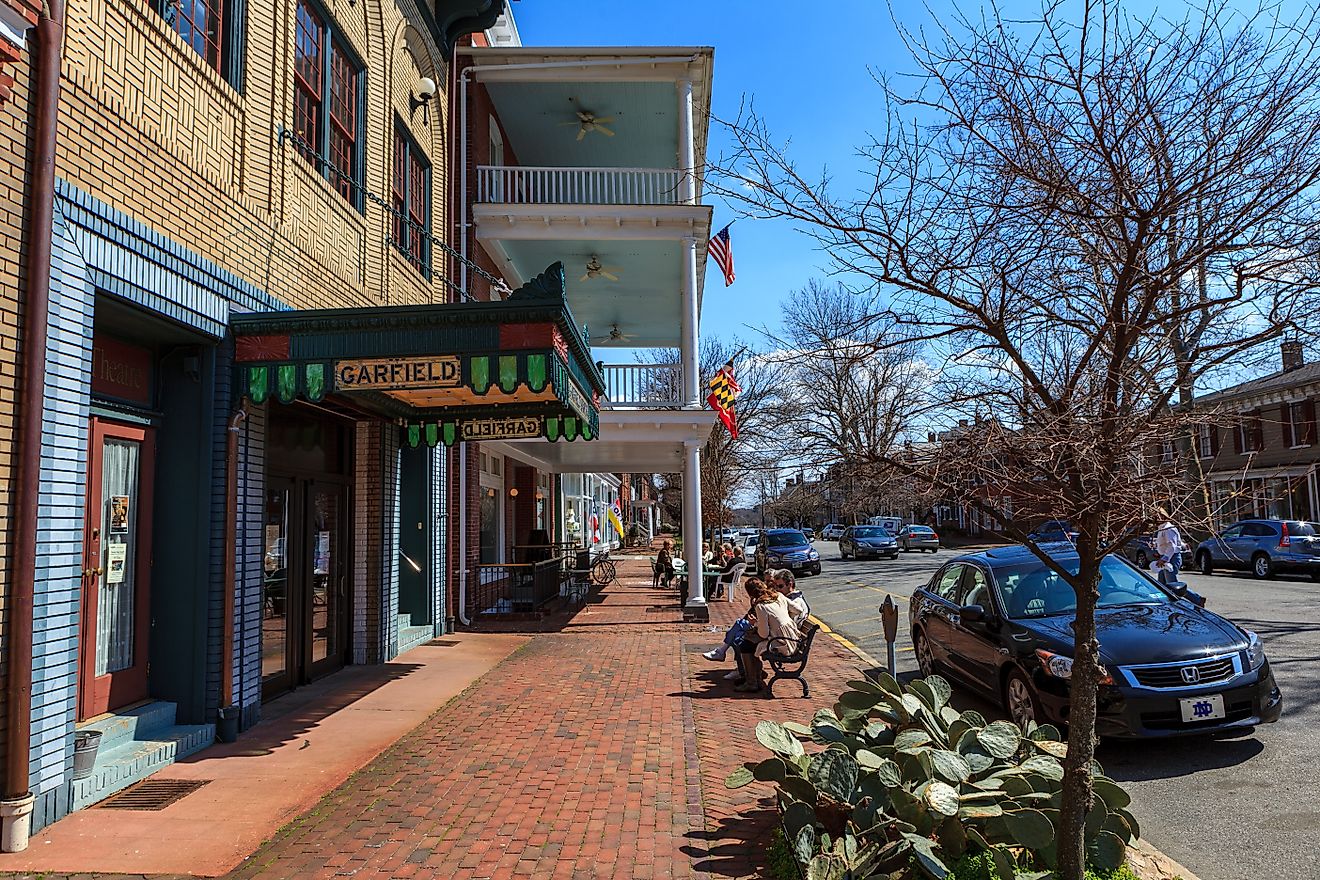Flags, Symbols & Currency of Kiribati
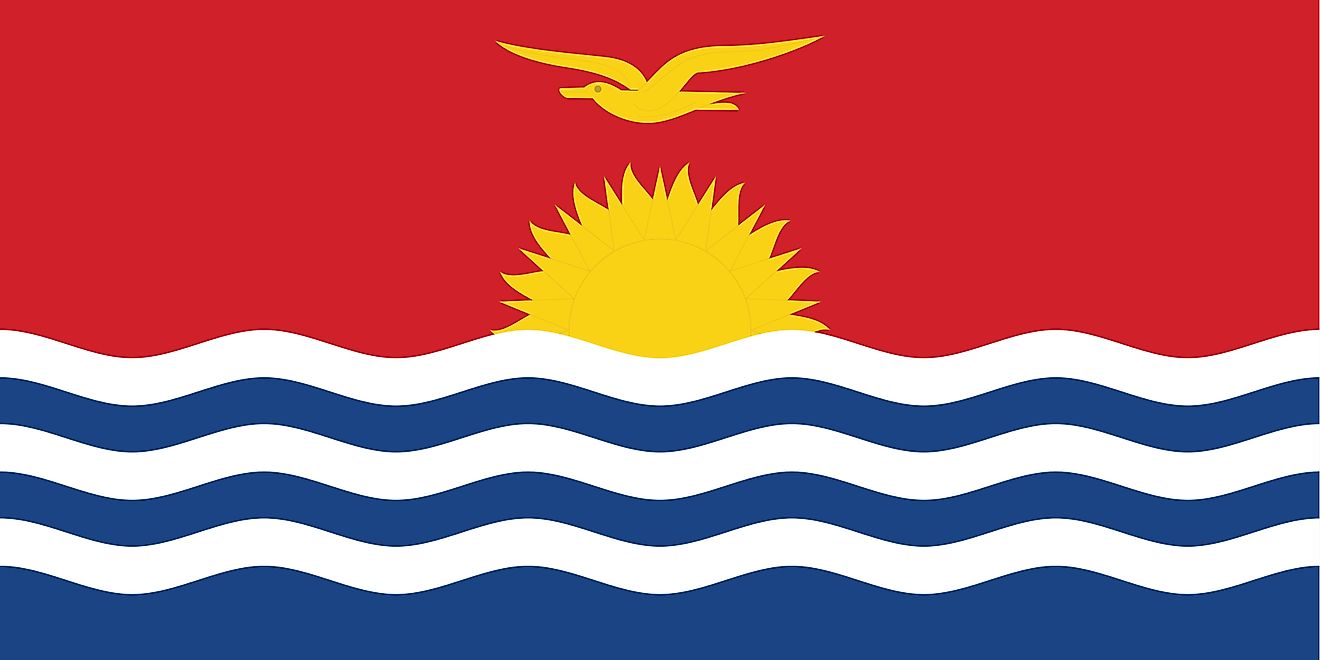
The National Flag of Kiribati was officially adopted on July 12, 1979. The flag has been designed by Sir Arthur Grimble.
The National Flag of Kiribati is a Horizontal Bicolor and consists of an upper half which is red in color with a yellow frigatebird flying over a rising sun; and the lower half which is blue with three horizontal wavy white stripes running from the hoist-side to the fly side of the flag. The horizontal wavy white stripes on the blue background represents the surrounding Pacific Ocean along with the three island groups that comprise Kiribati - the Gilbert, the Line, and the Phoenix Islands. It also symbolizes how the Ocean significantly influences the culture and economy of the island country. The flying yellow frigatebird epitomizes the authority, the strength, the freedom and the command of the sea. It also represents the nation’s famous dancing patterns. The sun symbolizes new life and also alludes to the geographical position of Kiribati - located in the north of the Equator. The 17 rays of the yellow sun represent the 16 Gilbert Islands and Banaba (formerly Ocean Island). The flag has a width-to-length proportion ratio of 1:2.
History of the Flag of Kiribati
Towards the end of the 19th century, the islands of Kiribati had become part of a British protectorate. The first flag that was flown in Kiribati was a colonial flag granted by the British Empire. This flag was a British Blue Ensign with the coat of arms in the center of the fly half of the flag. From 1937 onwards, this colonial flag (Flag of the Gilbert and Ellice Islands) was started to be used. Just prior to the independence of the country, a competition was held to select the design for the country’s new national flag. However, the accepted design corresponded to the design of the colonial coat of arms. Slight modifications to the design were suggested by the College of Arms but the people of the country were not happy with the changes. The new flag was finally hoisted on July 12, 1979, in the capital city of Tarawa.
Symbols of Kiribati
National Emblem of Kiribati
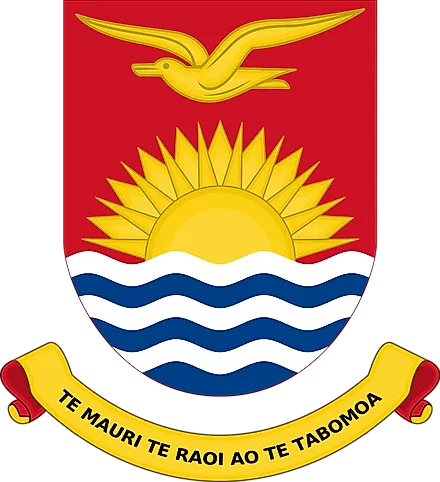
The current official National Emblem of Kiribati was adopted in 1979. It features a shield which has two halves. The upper half has a red background on which there is a rising sun with a yellow frigatebird flying over it. The lower half of the shield is blue with three horizontal wavy white stripes. Below the shield is a yellow ribbon with the national motto: “Te Mauri te Raoi ao te Tabomoa” (“Health, Peace and Prosperity”).
National Motto
“Te Mauri te Raoi ao te Tabomoa” (“Health, Peace and Prosperity”)
National Anthem
- Anthem Title: "Teirake kaaini Kiribati" ("Stand up, Kiribati")
- Music Composer: Tamuera loteba Uriam
- Lyricist: Tamuera loteba Uriam
- Date of Adoption: July 12, 1979.
"Teirake kaaini Kiribati" ("Stand up, Kiribati") is the national anthem of Kiribati. The music of the anthem and its lyrics have been created by Tamuera loteba Uriam. The anthem was officially adopted on July 12, 1979.
"Kunan Kiribati" (Gilbertese)
Teirake kaaini Kiribati, Anene ma te kakatonga,
Tauraoi nakon te mwioko, Ma ni buokia aomata.
Tauaninne nte raoiroi, Tangiria aomata nako.
Tauaninne nte raoiroi, Tangiria aomata.
Reken te kabaia ma te rau, Ibuakoia kaain abara,
Bon reken te nano ae banin, Ma te i-tangitangiri naba.
Ma ni wakina te kabaia, Ma n neboa i eta abara.
Ma ni wakina te kabaia, Ma n neboa abara.
Ti butiko ngkoe Atuara, Kawakinira ao kairira,
Nakon taai aika i maira, Buokira ni baim ae akoi.
Kakabaia ara Tautaeka, Ma ake a makuri iai.
Kakabaia ara Tautaeka, Ma aomata ni bane.
"'Stand up, Kiribati"
Stand up, People of Kiribati!
Sing with jubilation!
Prepare to accept responsibility
And to help each other!
Be steadfastly righteous!
Love all our people!
Be steadfastly righteous!
Love all our people!
The attainment of contentment
And peace by our people
Will be achieved when all our hearts beat as one,
Love two another!
Promote happiness and unity!
Love one another!
Promote happiness and unity!
We beseech You, O God, To protect and lead us
In the days to come.
Help us with Your loving hand.
Bless our Government and all our people!
Bless our Government and all our people!
The Currency of Kiribati is the Australian dollar
The current official currency of Kiribati is the Australian dollar (A$, AUD). One Dollar is subdivided into 100 cents. The local currency – Kiribati coins are used everywhere in the island besides the Australian dollar. Currently these old Kiribati coins are very few in number and are usually used only for collection.
Coins: 5c, 10c, 20c, 50c, $1 and $2 are currently in circulation.
The first series of coins were issued just after independence and were in denominations of 1, 2, 5, 10, 20, and 1 dollar. All the coins are of the same size and weight except the 1 dollar and 50 cent coins. They were all minted from the same composition (cupronickel) except that the 1 and 2 cents were minted from bronze. Similarly, to the surrounding Pacific island states, the lower denominations are ranging from 1 to 20 cents and always share appearance and some features. The largest denominations are usually designed uniquely in each respective state. The 50-cent coin is modelled in a circular shape with reeded edges, very different from the twelve-sided Australian dollar. The Australian dollar and the 1 Kiribati dollar coins are similar in shape with each having 12 sides, only that the Kiribati dollar is smaller and weigh less than Kiribati.
A nickel brass 2 dollars were produced in 1989 marking the Kiribati’s 10th anniversary of freedom. The two-dollar note was substituted by the circulation of the Australian 2-dollar coin in 1988.A lot of Kiribati coins are dated in 1979 to commemorate the country’s independence. Kiribati has ceased to circulate local coinage since the Australian coins are more popular and frequently used in highly populated states. Several coins have different images visualizing fauna and the flora of the country.
Banknotes: The Australian dollar $5, $10, $20, $50, $100 notes are currently in circulation.
The first series of notes to be used in Kiribati was the Australian pound sterling bank notes launched in 1914, just after the Gilbert Island turned to a crown colony of Great Britain in 1916.The first local notes were introduced in 1942 with the mandate from the Gilbert and Elice government. These notes were locally minted with an inferior and austere model. These notes circulated with equivalence to the sterling pound and were produced in the denomination of (1, 2, 5, 10) shillings and 1 pound. They were later ceased and eliminated from circulation due to their unavailability created by invasion emergencies.
Historical Currencies of Kiribati
Before the country of Kiribati attained independence, it was a part of the Gilbert Islands and the Australian coins were circulated there. Before the issuance of the Australian dollar, the Australian pound was mainly issued throughout the island. At the same time, Gilbert and Elice islands notes were still in circulation and one could exchange them with the Sterling pound. Earlier, the island was occupied by the Japanese during the Second World War and the oceanic pound was used in all bank notes issued by the Japanese government. This Japanese currency was intended to be a universal currency belonging to all the Pacific areas. After independence in 1979, the government of Kiribati advocated for the production of coins to mark a period of political freedom. People were very eager to use their local coins rather than the Australian dollar. Due to this, a 2-dollar coin was minted to substitute the dollar and mark the nation’s tenth anniversary.
